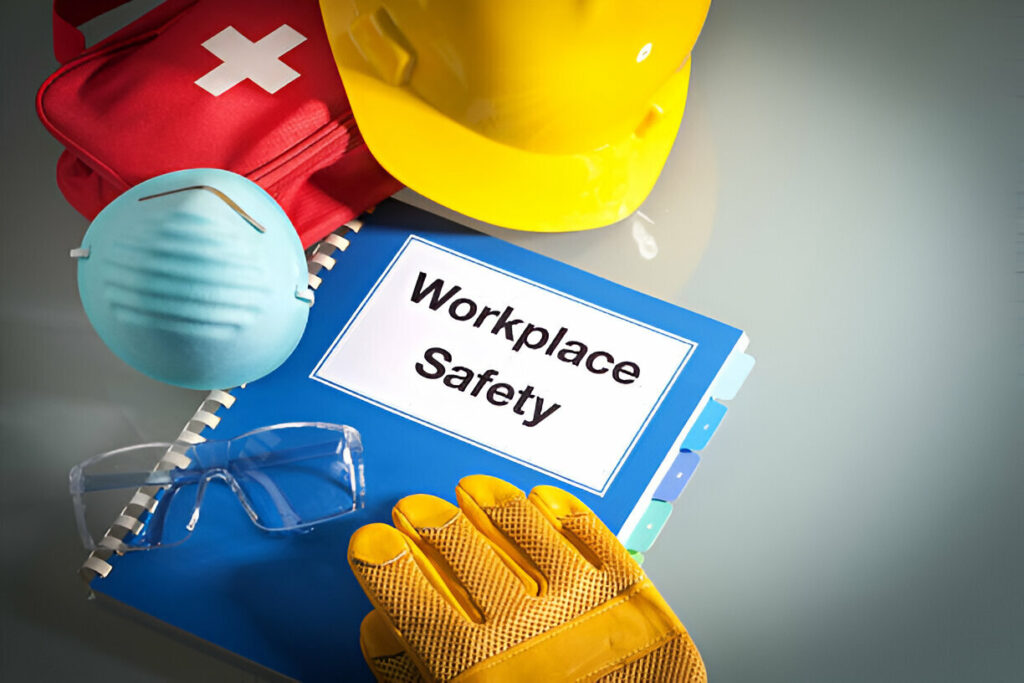Workplace safety is a critical concern, especially in industrial settings, where the potential risks can be severe. Ensuring safety in the workplace not only protects employees but also contributes to the overall productivity and success of a business. In this post, we’ll delve into the importance of workplace safety, its benefits, and strategies to improve safety standards in industrial environments.
Why Workplace Safety Matters in Industrial Settings
Industrial workplaces, such as factories, construction sites, and manufacturing plants, pose inherent risks due to heavy machinery, chemicals, and physical labor. As a result, the importance of maintaining workplace safety cannot be overstated. Workplace safety protocols help mitigate risks, prevent accidents, and safeguard the well-being of employees. It also ensures compliance with legal standards and reduces the potential for financial loss due to workplace injuries.
- Preventing Accidents: Accidents, whether minor or severe, can have long-lasting effects on employees and their families. Implementing robust workplace safety measures reduces the risk of accidents, ensuring employees return home safely after their shifts.
- Improving Productivity: A safe working environment leads to a more focused, confident workforce. When workers feel safe, they are more likely to be engaged and productive, contributing to the company’s overall success.
- Legal Compliance: Regulatory bodies, such as OSHA (Occupational Safety and Health Administration) in the U.S., mandate workplace safety standards. Ensuring compliance helps businesses avoid legal issues, fines, and penalties.
Key Strategies to Ensure Workplace Safety in Industrial Settings
Industrial environments come with unique safety challenges. However, by implementing effective safety measures, companies can minimize risks and create a safer work environment. Here are some key strategies for enhancing workplace safety in industrial settings:
1. Conduct Regular Safety Training
One of the most effective ways to promote Workplace Safety is by regularly training employees on proper safety protocols. Safety training should cover various areas, such as:
- Equipment Handling: Training employees on how to operate machinery safely prevents accidents caused by improper use.
- Emergency Procedures: Employees must be well-versed in emergency procedures, including evacuations and first aid protocols, to respond swiftly in case of an emergency.
- Hazardous Materials: Employees working with chemicals or hazardous materials should receive specialized training on handling, storage, and disposal procedures.
2. Maintain Clear Safety Protocols and Signage
Clear, visible signage and safety protocols ensure that employees know how to stay safe in their workspace. These guidelines should be prominently displayed throughout the facility. These can include:
- Warning Signs: Displaying warning signs around hazardous areas or machinery helps employees identify potential dangers.
- Safety Manuals: Providing safety manuals and checklists for employees ensures they know the procedures to follow in different situations.
Workplaces should also develop a safety manual that outlines standard operating procedures (SOPs) for employees to follow.
3. Implement Regular Safety Inspections
Frequent safety inspections help identify potential hazards before they cause accidents. Managers and supervisors should regularly inspect:
- Machinery and Equipment: Ensuring machinery is well-maintained and functioning properly reduces the risk of malfunctions that can lead to accidents.
- Workplace Conditions: Checking the overall environment for hazards such as spills, uneven floors, or obstructed exits can prevent workplace injuries.
- Personal Protective Equipment (PPE): Supervisors should ensure that employees have access to the appropriate PPE, such as helmets, gloves, and safety glasses, and are trained in their proper use.
4. Promote Mental Health and Wellness
Workplace safety isn’t just about physical risks; mental health plays a significant role in the overall well-being of employees. Addressing mental health issues can contribute to a safer work environment by improving focus and reducing workplace accidents. Strategies to promote mental wellness include:
- Employee Assistance Programs (EAPs): Offering counseling services and mental health resources to employees helps them cope with stress and personal challenges.
- Work-life Balance: Encouraging employees to maintain a healthy work-life balance reduces burnout, which can lead to accidents and lower productivity.
5. Utilize Technology and Automation for Safety
With technological advancements, industrial workplaces can adopt innovative solutions to improve Workplace Safety. One such technology is telemedicine. Telemedicine in industrial settings enables workers to consult healthcare professionals remotely in case of an injury, reducing delays in getting medical attention. Here are some technological tools that can enhance workplace safety:
- Wearable Safety Devices: Devices that monitor workers’ vital signs, detect fatigue, and alert supervisors to potential risks can help mitigate workplace injuries.
- Telemedicine: Remote healthcare consultations allow workers to receive medical guidance and assessments in real time, which is especially useful for on-site injuries that may not require emergency care.
- Safety Management Software: Advanced software solutions can track safety incidents, schedule safety training, and analyze trends to identify areas that need improvement.
6. Foster a Safety Culture
Creating a safety-first culture is essential for ensuring that all employees prioritize safety. Leaders should model safe behaviors and encourage workers to actively participate in safety programs. A safety culture can be developed through:
- Leadership Commitment: Leaders must demonstrate a commitment to workplace safety by allocating resources for training, safety equipment, and regular inspections.
- Employee Involvement: Encouraging employees to report unsafe conditions and participate in safety committees ensures that everyone is engaged in maintaining a safe workplace.
The Role of Telemedicine in Workplace Safety
Telemedicine has become a valuable tool in Workplace Safety, especially in industrial settings where immediate access to healthcare might be challenging. Here’s how telemedicine can support workplace safety:
1. Immediate Access to Medical Advice
In the event of a workplace injury, having access to healthcare professionals via telemedicine allows workers to receive immediate advice. If the injury requires medical attention, telemedicine can help determine the urgency and guide workers on the next steps, including whether they need to visit a clinic or can continue working with basic treatment.
2. Reducing the Need for Emergency Room Visits
Telemedicine can help reduce unnecessary trips to the emergency room, particularly for minor injuries. Through remote consultations, employees can receive treatment or advice without disrupting work schedules or requiring long-distance travel.
3. Improved Monitoring of Chronic Conditions
For employees with chronic conditions such as diabetes or asthma, telemedicine allows for ongoing monitoring and virtual consultations, ensuring that these conditions are well-managed and do not interfere with workplace safety.
4. Addressing Mental Health Issues Remotely
Telemedicine can also be used to support employees’ mental health, offering remote counseling and mental health services. Addressing mental health issues proactively helps maintain focus and reduces the likelihood of accidents caused by stress or distraction.
Conclusion
Ensuring Workplace Safety in industrial settings is not just a legal requirement; it’s a responsibility that protects employees, enhances productivity, and promotes a positive work environment. By implementing safety training, clear protocols, regular inspections, and utilizing technology like telemedicine, companies can create a safer, more efficient workplace.
Telemedicine, in particular, has proven to be a game-changer, offering immediate medical support and facilitating remote monitoring. For industrial employers, incorporating these strategies into their safety programs can go a long way in reducing accidents and ensuring the well-being of their workforce.
For more information on workplace safety measures, check out our Workplace Safety Resource Page.
Also read : How Industry 4.0 is Revolutionizing Factory Floors




